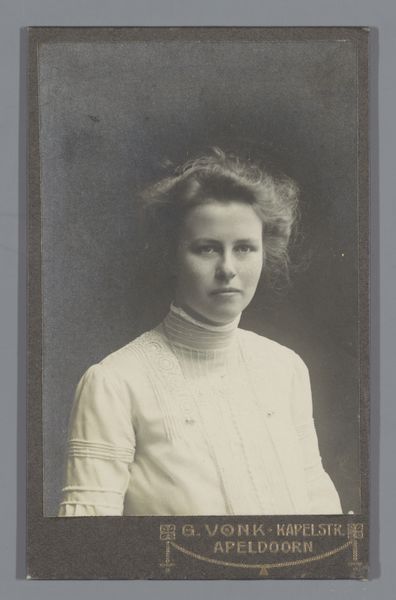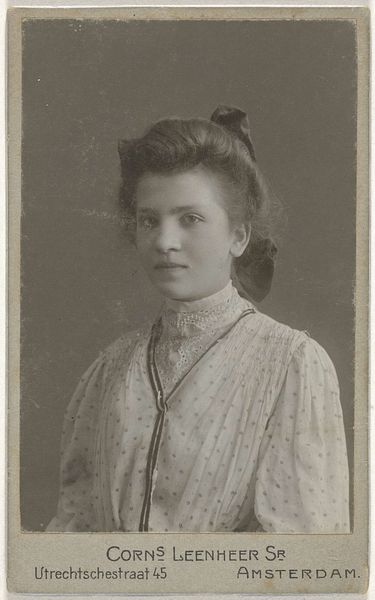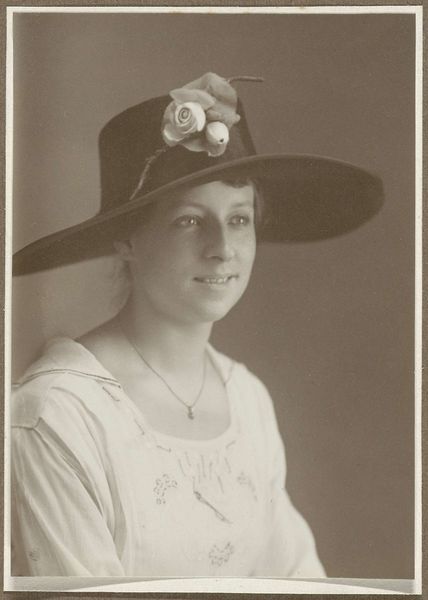
photography
#
portrait
#
pictorialism
#
photography
#
modernism
Dimensions: image: 24 x 18.8 cm (9 7/16 x 7 3/8 in.) sheet: 25.3 x 20.3 cm (9 15/16 x 8 in.)
Copyright: National Gallery of Art: CC0 1.0
Curator: Let’s take a look at Alfred Stieglitz’s photographic portrait, “Marie Rapp,” created in 1913. Editor: Immediately, the soft focus and monochromatic palette evoke a sense of quiet introspection. It’s less about capturing precise detail, more about feeling, like holding a memory. Curator: Absolutely. The soft focus aligns with pictorialism, a movement that sought to elevate photography to the level of painting. But the stark, almost confrontational gaze from Marie seems undeniably modern. Editor: And her clothing, though seemingly simple, speaks volumes about the changing social role of women at the time. A dress of probable manufactured cloth with machine made lace accents speaks to a democratizing trend in fashion. How it becomes more widespread and reproducible. Curator: True. The high collar edged in manufactured lace carries a hint of the conservative past, yet the confident look breaks from traditional demure female portraiture, representing modern female subjectivity, almost pushing against its constraints. Editor: The making itself interests me. The printing process of that era involved meticulous darkroom manipulation to achieve such dreamy effects. It reveals that photography too could be as materially intensive as other mediums and required a dedicated craftsperson. Curator: Stieglitz definitely saw himself as more than a technician. He poured his own aesthetic and intellectual vision into these portraits. Rapp here isn't merely an object; she’s presented with respect and even vulnerability. Perhaps a window into Stieglitz’s personal life or thoughts about female artists. Editor: But the viewer can’t help wonder how she felt about this rendering? Who determined which traits were ideal to preserve in the final version? A seemingly simple image encapsulates layers of production and perception, leaving so many traces of that original exchange, filtered through both the lens and darkroom manipulations of its maker. Curator: An exchange forever capturing not only the spirit of Rapp, but perhaps, equally so, Stieglitz's desires and the early stirrings of photographic art at the dawn of modernism. Editor: It all makes me consider just how actively we shape our own image in an image obsessed world, echoing throughout today.
Comments
No comments
Be the first to comment and join the conversation on the ultimate creative platform.













